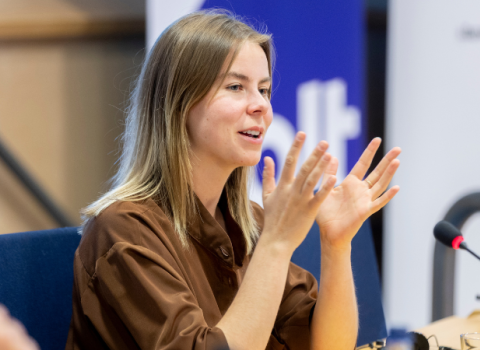A little over a year after a revolt against the European Commission’s €1 billion Human Brain Project (HBP) by a group of European neuroscientists, researchers are still awaiting details of promised reforms.
In July last year, scientists from across Europe and beyond put their names to an open letter of protest to the Commission, questioning the project’s scientific validity and its governance, and threatening a boycott.
The 10-year flagship neuroscience research programme, involving 112 European institutions, is an attempt to create a computer model of the brain down to the level of individual cells. Last year’s uprising started after the decision of the former executive board to eliminate cognitive and systems biology from the next phase of the project. Signatories of the open letter saw that as turning the HBP from a cross-disciplinary effort to a computer science project.
“The letter triggered a mediation process organised by the project: this seemed to be executed quite well and resulted in a very critical report [released in May] that backed up the criticisms we raised in the letter,” said one of the complainants, Zachary Mainen, a neuroscientist and founder of Lisbon’s Champalimaud Neuroscience Programme.
Since the report’s publication, the three-member executive committee led by neuroscientist Henry Markram has been dissolved and replaced by a 22-member governing board.
However, Mainen said it is not clear either what practical effect the governance changes will have or whether any of the wider scientific recommendations made by the report will be implemented. “So things went in the right direction but may not go far enough,” he said.
The first test for new governing board will be the publication of a new Framework Partnership Agreement (FPA), replacing the one the mediation committee’s report found to be inadequate and ill-directed in various respects.
Amongst other criticisms the report said the project needed to "better articulate its strategic goals" and "avoid at all costs creating unrealistic expectations”.
The report also stressed that collaboration between the 13 sub-projects must improve saying, “It is clear that very significant efforts remain to be made, in terms of coordination and integration, for the HBP to become a truly large unified project.”
Until the FPA is published it will not be clear whether the new management has actually delivered what the project has nominally signed up to by accepting the mediation report in its entirety, says Peter Dayan, director of the Gatsby Computational Neuroscience Unit at University College London. “Critical issues - such as how the HBP could become a neuroscientifically useful ‘service’ – should be encompassed,” he said.
Science|Business attempted to contact the HBP to find out when the FPA will be published but there has been no response.




 A unique international forum for public research organisations and companies to connect their external engagement with strategic interests around their R&D system.
A unique international forum for public research organisations and companies to connect their external engagement with strategic interests around their R&D system.